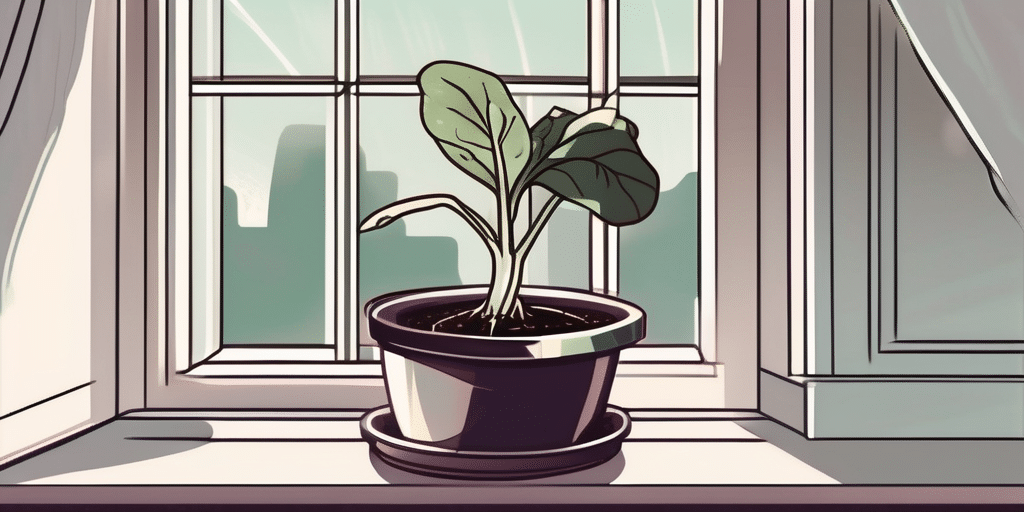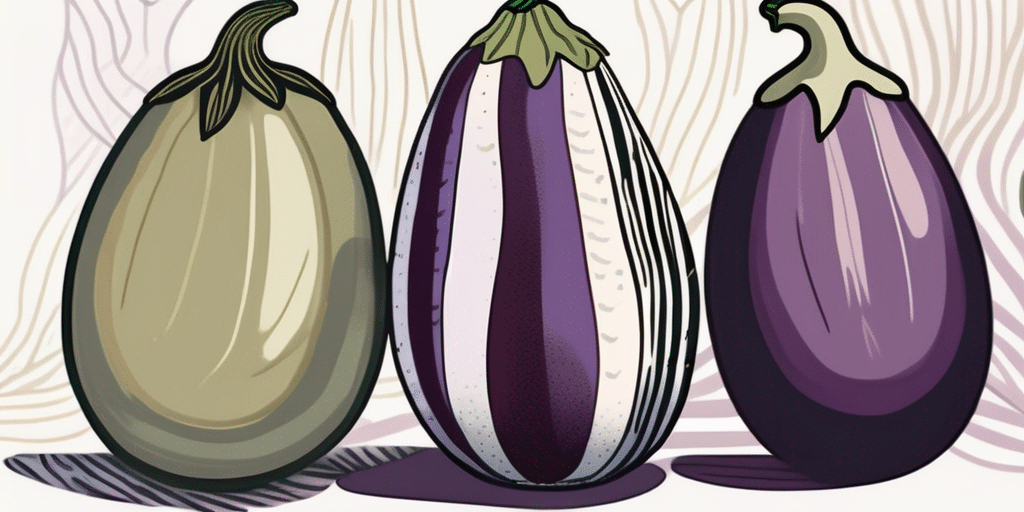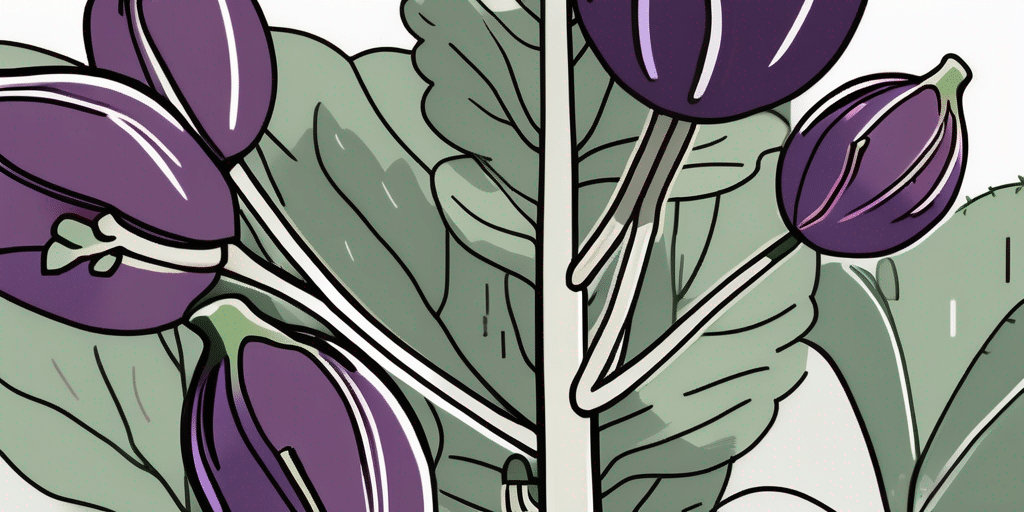If you’re a gardener in California, you may be familiar with the delicious and versatile vegetable known as the Diamond Eggplant. This article will guide you through the process of planting and growing this unique vegetable in California’s climate. Whether you’re a novice or experienced gardener, we’ll provide you with all the information you need to successfully cultivate Diamond Eggplant in your own backyard.
Climate & Hardiness Zones in California
Before diving into the specifics of growing Diamond Eggplant, it’s important to understand the climate and hardiness zones in California. The state’s diverse geographical regions offer a range of climates, from coastal areas with mild temperatures influenced by the Pacific Ocean’s cooling effect to inland valleys with warmer conditions due to their distance from maritime influences. These variations in climate can significantly impact the success of your eggplant crop, as temperature, sunlight, and moisture levels all play crucial roles in plant growth and fruit production.
California’s vast expanse encompasses a wide array of microclimates, each with its own unique characteristics. For example, the coastal regions of Northern California experience cool, foggy summers and mild winters, ideal for crops that thrive in moderate temperatures. In contrast, the southern deserts of California endure scorching hot summers and chilly winters, posing challenges for plants that require consistent warmth.
According to the United States Department of Agriculture (USDA), California has multiple hardiness zones, ranging from 5 to 11. These zones are defined by the average annual minimum temperatures and serve as a guide for selecting appropriate plants for specific regions. Understanding your local hardiness zone is essential for determining which varieties of eggplant are best suited to your area’s climate and growing conditions. By aligning your plant selection with the hardiness zone recommendations, you can increase the likelihood of a successful harvest and healthy garden ecosystem.
When to Plant Diamond Eggplant in California
Timing is crucial when it comes to planting Diamond Eggplant in California. The ideal time to sow eggplant seeds is after the danger of frost has passed and the soil temperature reaches at least 60°F (15°C). In most regions of California, this typically falls between late March and early May.
Start by preparing your garden bed or container. Eggplants thrive in well-draining soil with a pH level between 5.5 and 6.8. Amend the soil with organic matter, such as compost or aged manure, to enhance its fertility and texture.
When planting the seeds, make sure to space them approximately 18 to 24 inches apart and sow them about a quarter-inch deep. Lightly cover the seeds with soil and water gently to keep the soil moist.
It’s important to note that Diamond Eggplant is a warm-season crop that requires plenty of sunlight to thrive. Choose a planting location that receives at least 6 to 8 hours of sunlight per day for optimal growth and fruit production. Additionally, eggplants are sensitive to cold temperatures, so ensure that the planting site is sheltered from strong winds and exposed to warmth.
Consider using a layer of organic mulch around the base of the plants to help retain soil moisture, suppress weed growth, and regulate soil temperature. Water the eggplants regularly, aiming to keep the soil consistently moist but not waterlogged. Avoid overhead watering to prevent fungal diseases, and consider using a soaker hose or drip irrigation system for efficient watering.
When to Harvest or Pick Diamond Eggplant in California
One of the most exciting parts of growing Diamond Eggplant is harvesting and enjoying the fruits of your labor. But how do you know when it’s the right time to pick them?
Typically, eggplants are ready for harvest around 60 to 90 days after planting. However, it’s essential to consider the variety you’re growing, as some may mature earlier or later.
Here are a few signs to look for to determine if your Diamond Eggplants are ready to be harvested:
- The fruit should have a glossy, deep purple color.
- It should feel firm when gently squeezed.
- The skin should be smooth and unblemished.
- When you cut into the eggplant, the seeds should be small and undeveloped.
If your eggplants meet these criteria, it’s time to harvest! Use a sharp knife or shears to cut the fruit from the plant, leaving a short stem attached. Be careful not to damage the plant or other developing fruit while doing so.
Furthermore, when harvesting Diamond Eggplants in California, it’s important to note that the ideal time of day for picking them is in the early morning. This is when the fruits are at their peak freshness and turgor pressure, ensuring the best flavor and texture for your culinary creations.
Additionally, consider the weather conditions when planning your harvest. It’s advisable to pick your eggplants on a dry day to prevent any moisture-related issues during storage. Excess moisture can lead to rotting or mold development, affecting the quality of your harvest.
Frequently Asked Questions
Q: How long does it take for Diamond Eggplant seeds to germinate?
Germination time for Diamond Eggplant seeds can vary depending on various factors, such as temperature and moisture. However, on average, they should sprout within 7 to 14 days.
It’s important to note that providing a warm and moist environment can expedite the germination process. Consider using a seedling heat mat to maintain an optimal temperature of around 75-85°F for quicker and more uniform germination of your Diamond Eggplant seeds.
Q: Can I grow Diamond Eggplant in containers?
A: Absolutely! Diamond Eggplant can be grown successfully in containers. Make sure the container is at least 12 to 14 inches deep and has good drainage. Choose a compact or dwarf variety that is suitable for container gardening.
Container gardening offers the flexibility to move your Diamond Eggplant plants to sunnier spots or shelter them from strong winds. Additionally, using a high-quality potting mix enriched with compost can provide the necessary nutrients for healthy plant growth and abundant fruit production.
Q: How often should I water my Diamond Eggplant plants?
A: Eggplants require consistent moisture to thrive, especially during hot summer months. Aim to water deeply once or twice a week, providing about one inch of water per week. However, be cautious not to overwater, as eggplants are susceptible to root rot.
During periods of extreme heat, consider mulching around your Diamond Eggplant plants to help retain soil moisture and regulate temperature. Regularly check the soil moisture levels by inserting your finger into the soil up to the second knuckle – if it feels dry, it’s time to water your plants.
With the right conditions and care, you can enjoy a bountiful harvest of Diamond Eggplant in your California garden. Remember to keep an eye on the weather, water consistently, and provide support for your plants as they grow. Soon, you’ll be savoring the delicious flavors of this versatile vegetable in your favorite recipes.
Join Our Gardening Community
Ready to take your Diamond Eggplant harvest to the next level? Subscribe for free to How to Grow Everything and learn how to build the garden of your dreams! Receive personalized gardening advice tailored to your California location, grow zone, and experience level. Our family is committed to helping you grow not just Diamond Eggplants, but a whole array of garden delights. With our exclusive tips, special offers, and the best gardening deals delivered straight to your inbox, you’ll have everything you need to cultivate a thriving garden. And don’t worry, we keep it 100% free and free of spam. From our family to yours, let’s grow together.





